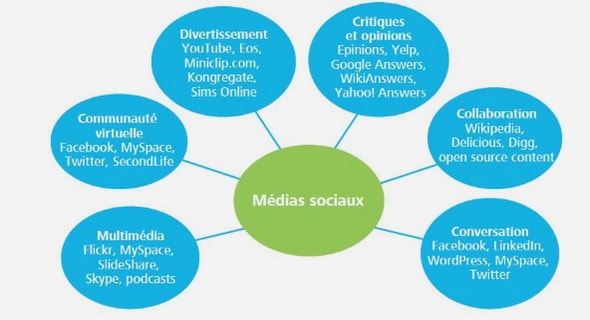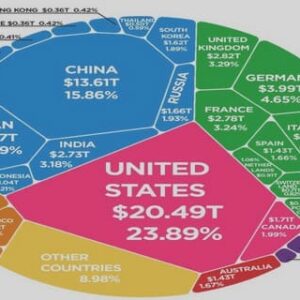(Downloads - 0)
For more info about our services contact : help@bestpfe.com
Table of contents
Chapter 1: Why the Binge Drinkers Survive? A Costly Signal Perspective on Excessive Alcohol Use.
1.1. Introduction
1.1.1. Defining Binge Drinking
1.1.2. Epidemiology
1.1.3. Clinical Diagnosis
1.1.4. Distinguishable effects
1.2. Binge Drinking as a Multi-faceted Phenomenon
1.2.1. Social determinants
1.2.2. Cognitive Aspects
1.2.3. Biological components
1.3. Binge Drinking Theories
1.3.1. A cognitive model of binge drinking.
1.3.2. The theory of planned behavior
1.3.3. The social bond theory
1.3.4. The self-control theory
1.4. Is there a meaning to risky drinking?
1.4.1. The limits of social and cognitive theories
1.5. The evolutionary roots of binge drinking
1.5.1. The honest signal theory
1.5.2. Animal Literature
1.5.3. Honest Signaling as an Evolutionary Stable Strategy
1.5.4. A Competitive Theory: the Life-History Theory
1.6. Summary of predictions
1.6.1. Alcohol tolerance as a cue to potential mates.
1.6.2. Alcohol tolerance as a threat signal to same-sex rival
1.6.3. Agent-based modeling of binge drinking
1.6.4. A costly signal perspective on prevention actions
Chapter 2: An Original Method for Testing the Function of Binge Drinking: Dating Website, Eye tracking and Hormonal Data.
2.1. Costly Signal
2.1.1. Pupil dilation as a cue to attractiveness
2.1.2. The ovulatory shift
2.2. Current Study
2.2.1. Study 1
2.2.1.1. Method.
2.2.1.2. Participants.
2.2.1.3. Procedure.
2.2.1.4. Measures.
2.2.1.5. Results.
2.2.1.6. Attractiveness.
2.2.1.7. Fixation time.
2.2.1.8. Pupil dilation ratio.
2.2.1.9. Ovulatory shift.
2.2.1.10. Discussion
2.2.1.11. Limitations
2.2.2. Study 2
2.2.2.1. Method.
2.2.2.2. Participants
2.2.2.3. Results.
2.2.3. Discussion
2.2.4. Study 3
2.2.4.1. Method.
2.2.4.2. Participants.
2.2.4.3. Measures.
2.2.5. Results.
2.2.6. Discussion.
2.3. General Discussion
Chapter 3: Alcohol Tolerance as a Costly Signal for Intrasexual Competition and Reproductive Success Moderated by Social Status: an Online Investigation of Impression Formation.
3.1. Binge drinking data
3.2. The Costly Signal Theory
3.2.1. Biological signal in the animal world
3.2.2. Binge drinking and costly signal theory.
3.3. Current Research
3.3.1. Study 1
3.3.1.1. Method.
3.3.1.2. Participants.
3.3.1.3. Procedure.
3.3.1.4. Preliminary results.
3.3.1.5. Results.
3.3.1.6. Discussion.
3.3.2. Study 2
3.3.2.1. Method.
3.3.2.2. Participants.
3.3.2.3. Procedure.
3.3.2.4. Preliminary results.
3.3.2.5. Results.
3.3.2.6. Discussion.
3.3.3. Study 3
3.3.3.1. Method.
3.3.3.2. Participants.
3.3.3.3. Procedure.
3.3.3.4. Preliminary results.
Results.
3.3.3.5. Discussion.
3.3.4. Study 4
3.3.4.1. Method.
3.3.4.2. Participants.
3.3.4.3. Procedure.
3.3.4.4. Results.
3.3.4.5. Discussion.
3.4. General Discussion
Chapter 4: Risks Signaling as a Prevention Tool Against Binge Drinking: a Field Experiment in a French High School and an Online Replication.
4.1. Costly Signal Theory
4.2. Study 1: Field Study in a French High School
4.2.1. Method.
4.2.2. Participants.
4.2.3. Procedure.
4.2.4. Descriptive results.
4.2.5. Results.
4.2.6. Discussion.
4.3. Study 2: Online Replication
4.3.1.1. Methodology
4.3.1.2. Participants
4.3.1.3. Procedure
4.3.1.4. Results.
4.3.1.5. Discussion.
4.3.2. General Discussion
Chapter 5: Do Women Expose Themselves to More Health-Related Risks in Certain Phases of The Menstrual Cycle? A Meta-Analytic Review.
5.1. Hormones across the Menstrual Cycle
5.2. Key Domains of Health-related Risk-taking
5.2.1. Alcohol and Tobacco Consumption
5.2.1.1. State of the Evidence: Studies of Nonhuman Mammals Error! Bookmark not defined.
5.2.1.2. State of the Evidence: Human Studies
5.2.1.3. Insights from Evolutionary Theory
5.2.1.4. Insights from Behavioral Neuroendocrinology Error! Bookmark not defined.
5.2.1.5. Prediction
5.2.2. Sexual Behavior
5.2.2.1. State of the Evidence: Studies of Nonhuman Animals defined.
5.2.2.2. State of the Evidence: Human Studies
5.2.2.3. Insights from Evolutionary Theory
5.2.2.4. Insights from Behavioral Neuroendocrinology Error! Bookmark not defined.
5.2.3. Risk Recognition and Avoidance
5.2.3.1. State of the Evidence: Nonhuman Animal Models defined.
5.2.3.2. State of the Evidence: Human Studies
5.2.3.3. Insights from Evolutionary Theory
5.2.3.4. Insights from Neuroendocrinology
5.3. Method
5.3.1. Inclusion criteria.
5.3.2. Coding Study Characteristics.
5.3.3. Analysis
5.4. Results
5.4.1. Alcohol and Tobacco consumption patterns. Ovulation vs. other phases.
Bookmark not defined.
5.4.2. Sexuality pattern. Ovulation vs. other phases.
5.4.3. Risk recognition and avoidance patterns. Ovulation vs. other phases.
Bookmark not defined.
5.5. Discussion
Chapter 6: Binge Drinking Frequency and Intensity across the United States (2007-2016): a Multilevel Modeling of Life-History Theory and Risky Drinking.
6.1. Life-history theory and risky drinking
6.2. Current Study
6.2.1. Methodology.
6.2.2. Participants.
6.2.3. Measures.
6.2.4. Descriptive results.
6.2.5. Inferential results.
6.2.5.1. Binge Drinking Frequency (2016).
6.2.5.2. Drinking Intensity (2007).
6.2.5.3. Drinking Frequency (2007).
6.2.6. Discussion.
Chapter 7. Conclusion
ANNEX CHAPTER 2
ANNEX CHAPTER 4
ANNEX CHAPTER 5
ANNEX CHAPTER 6
References


